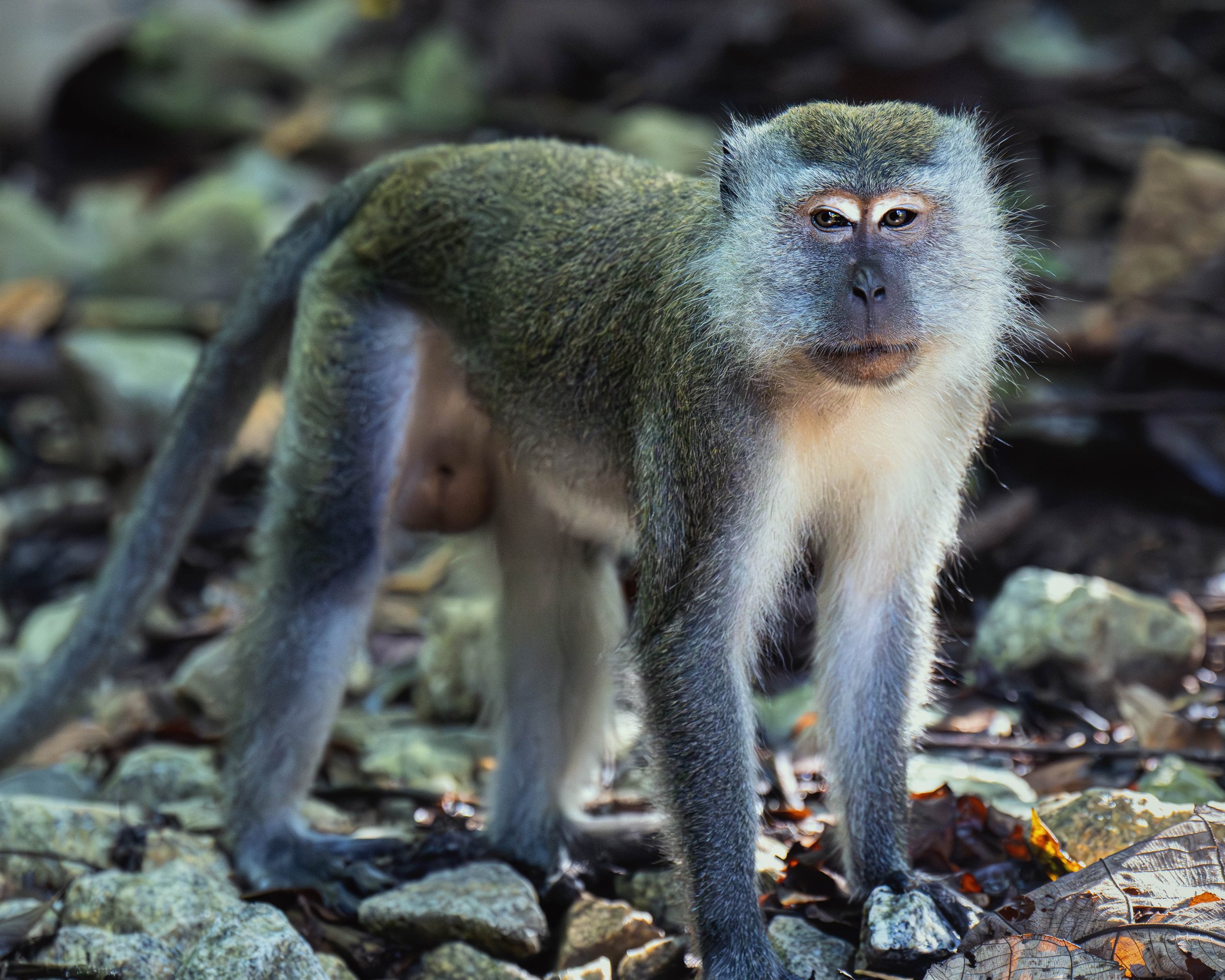
The Macaques of Singapore
“If we do not do something to help these creatures, we make a mockery of the whole concept of justice.”
~ Jane Goodall
Long-Tailed Macaques
The ‘Kings of Singapore’: long-tailed macaques own the city, and you can feel it. Soaring from tree to tree, grabbing snacks here and there, playing with their fellow primates, teasing the locals and even more the tourists, these guys have adapted to the integrative city-nature approach that Singapore has implemented in a fun and inspiring way. Even with their land mass restriction due to being an island and their ever-growing population, the city of Singapore has retained major nature reserves in order to support its variety of wildlife and its jungle ecology. In these reserves, live roughly 1,470 long-tailed macaques.
A New Perspective
Macaques live all over Southeast Asia, but what makes life in Singapore different for macaques is that they are not marketed as a tourist attraction by NParks (the government agency for national parks in Singapore). There are strict laws to avoid feeding the macaques and frequent reminders on how to appropriately interact with them in the reserves; they are treated more like residents of the reserve rather than an attraction for tourists to gawk at. Whenever I mentioned to a local that I was visiting the reserve, they reminded me of the macaque rules and encouraged me to respect their space. There is an entire culture of respect for Macaques and their homes in the reserves in Singapore, and each of the locals takes ownership to protect their fellow residents.
“Monkey Guards”?
This respect for macaques is not only seen and heard, but also studied and documented. This interesting journal article (Fuentes, et al) shows that the lower interaction between macaques and humans in Singapore versus other southeast asian countries shows a lower risk of macaque-human pathogen transmission. According to this Wildlife Act of Singapore, an individual can be charged up to $10,000 for wrongful interactions with local macaques. The Jane Goodall Institute of Singapore has even hired appropriately named “monkey guards” to protect and essentially guard monkeys that might be moving between reserves or in more uncommon areas. OurWildNeighbors shared some threats to the long-tailed macaque population of Singapore including habitat loss, motor vehicles, human food, disruptive human interaction, and stress.
Everyone is Involved in Conservation.
One unique thing that Singapore NParks does is encourage their residents to participate in preserving and respecting the macaques. On their website, NParks states, “As a prominent species of Singapore’s native biodiversity, monkeys are an important part of Singapore’s natural heritage, and should be recognised as such. You, too, can do your part to conserve these monkeys…The long-tailed macaque – an ecologically important animal with a society that is similar to ours in many ways.” How can we spread this attitude of respect and stewardship towards local wildlife to other countries?
read & see about more wildlife in Singapore here: Wildlife in Singapore
Photos taken by Laura Czaplicki on a SONY A7RIV.







